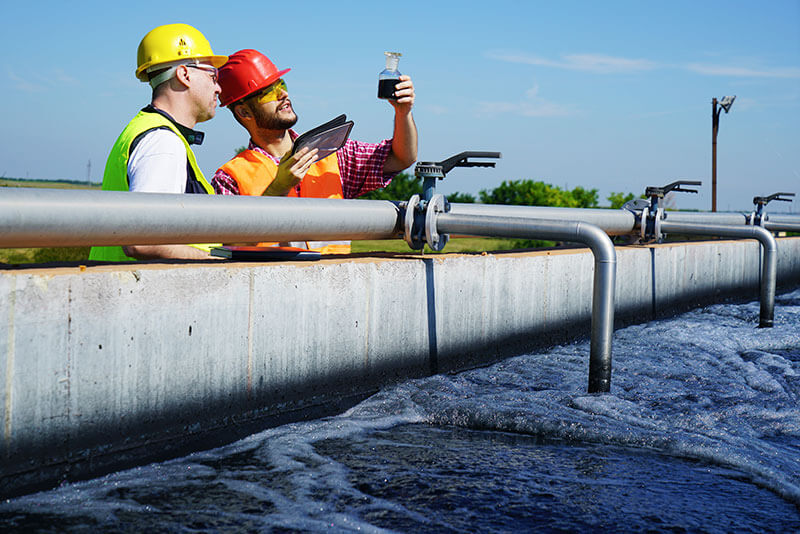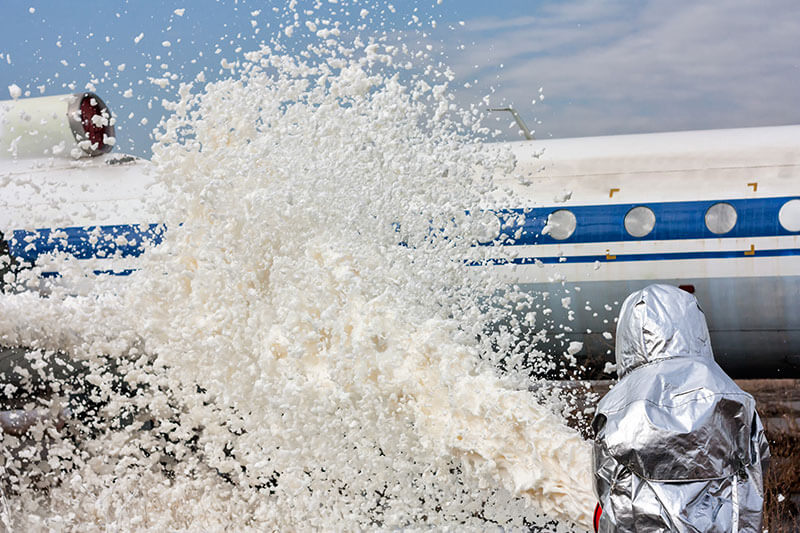Environmental Law
Environmental Law
PFAS (Forever Chemical) Pollution Litigation
Alvendia, Kelly & Demarest have been on the forefront of emerging PFAS wastewater lawsuits and PFAS biosolid litigation. Our dedicated team of experienced environmental lawyers is committed to advocating for municipalities, state governments, and private wastewater operators seeking compensation for the remediation of PFAS contamination.
We are currently investigating areas of known AFFF applications to learn more about the concentration of potential contaminants in the ground water, soil waste water, and the surrounding environment. Attorneys are talking to property owners with known historical use of AFFF on or near their property. Seeking the guidance of an attorney is extremely important in these types of situations. Our attorneys can assist clients with soil and groundwater sampling, sample analysis by an industry-leading lab, research into use of legacy foams, and expert investigation into the potential impacts of PFAS contamination on the surrounding areas.
What is PFAS and how does it affect the environment?

PFAS (per- and polyfluoroalkyl substances) pollution has a significant impact on the environment in various ways:
1. Water contamination: PFAS are highly soluble in water and resistant to natural degradation processes. They have been found in surface water, groundwater, and even drinking water sources near manufacturing facilities, airports, and military bases where PFAS-containing firefighting foams were used. This contamination can harm aquatic life and pose risks to human health through consumption of contaminated water.
2. Soil and sediment contamination: PFAS can accumulate in soil and sediments, particularly near industrial sites or areas where PFAS-containing products were used or disposed of. The chemicals can then enter the food chain through uptake by plants and organisms, leading to bioaccumulation in animals and potential impacts on ecosystem health.
3. Bioaccumulation and biomagnification: PFAS are persistent and can bioaccumulate in living organisms, meaning they accumulate in the tissues of organisms over time. This can lead to biomagnification, where PFAS concentrations increase at higher levels of the food chain, potentially harming top predators and wildlife populations.
4. Persistence in the environment: PFAS are extremely persistent and do not break down easily under natural conditions. They can remain in the environment for decades or even centuries, posing long-term risks to ecosystems and potentially exposing future generations to their harmful effects.
5. Air pollution: Some PFAS can be released into the air during manufacturing processes or combustion of PFAS-containing products. These airborne PFAS can then be deposited onto soil, water bodies, and vegetation, contributing to environmental contamination.
6. Ecological impacts: Studies have shown that PFAS can have adverse effects on various organisms, including plants, invertebrates, fish, and wildlife. These effects can range from developmental abnormalities and reproductive issues to altered behavior and immune system dysfunction, potentially disrupting entire ecosystems.
The widespread and persistent nature of PFAS pollution, coupled with the potential for bioaccumulation and biomagnification, has raised significant concerns about the long-term implications for environmental health and the sustainability of ecosystems. Addressing PFAS pollution requires coordinated efforts to prevent further releases, remediate contaminated sites, and develop effective strategies for managing and disposing of these persistent chemicals.
How does AFFF affect the environment?

AFFF stands for Aqueous Film-Forming Foam. It is a type of fire-fighting foam that has been widely used to extinguish flammable liquid fires, particularly at military bases, airports, and industrial facilities.
AFFF is water-based and contains fluorinated surfactants, which are PFAS (per- and polyfluoroalkyl substances) compounds. The fluorinated surfactants in AFFF help to create a thin aqueous film that spreads across the surface of the burning liquid, separating the fuel from the oxygen and suppressing the fire.
While AFFF has been highly effective in fighting flammable liquid fires, it has also been a significant source of PFAS contamination in the environment. During firefighting operations, AFFF can be released into the soil, groundwater, and surface water, leading to widespread PFAS pollution.

The use of AFFF at military bases, airports, and firefighting training areas has resulted in numerous instances of PFAS contamination in drinking water sources and nearby ecosystems. This has led to concerns about the potential health risks associated with PFAS exposure and has prompted efforts to phase out the use of AFFF containing legacy PFAS compounds.
Some key points about AFFF:
1. Legacy AFFF formulations contained long-chain PFAS like PFOS (perfluorooctane sulfonate) and PFOA (perfluorooctanoic acid), which are highly persistent and bioaccumulative.
2. Modern AFFF formulations use shorter-chain PFAS compounds, which are believed to be less bioaccumulative and potentially less harmful, but their long-term environmental impacts are still under investigation.
3. Many countries and organizations, including the U.S. Department of Defense, have implemented policies to phase out the use of legacy AFFF formulations and transition to more environmentally friendly alternatives.
4. Extensive cleanup and remediation efforts are underway at sites contaminated by AFFF, involving costly and complex processes to remove PFAS from soil, water, and sediments.
The widespread use of AFFF and the resulting PFAS contamination have led to numerous lawsuits and regulatory actions aimed at holding manufacturers and users of AFFF accountable for environmental damages and health risks associated with PFAS exposure.
Chemical manufacturers can be held liable for their negligence.
Litigation against these companies has resulted in the recovery of billions of dollars that has helped toward the cost of cleanup efforts. It is crucial that chemical companies are held accountable so we can help stop the spread of these forever chemicals in our environment. Along with our partners, we represent Arkansas, Kentucky, US Virgin Islands, New Orleans, Atlanta, Baton Rouge, Shreveport, and others. In addition to our leadership in environmental law, AKD also jointly represents over 30 Louisiana cities, parishes, major universities and Sheriffs offices in the nationwide opioid litigation.
